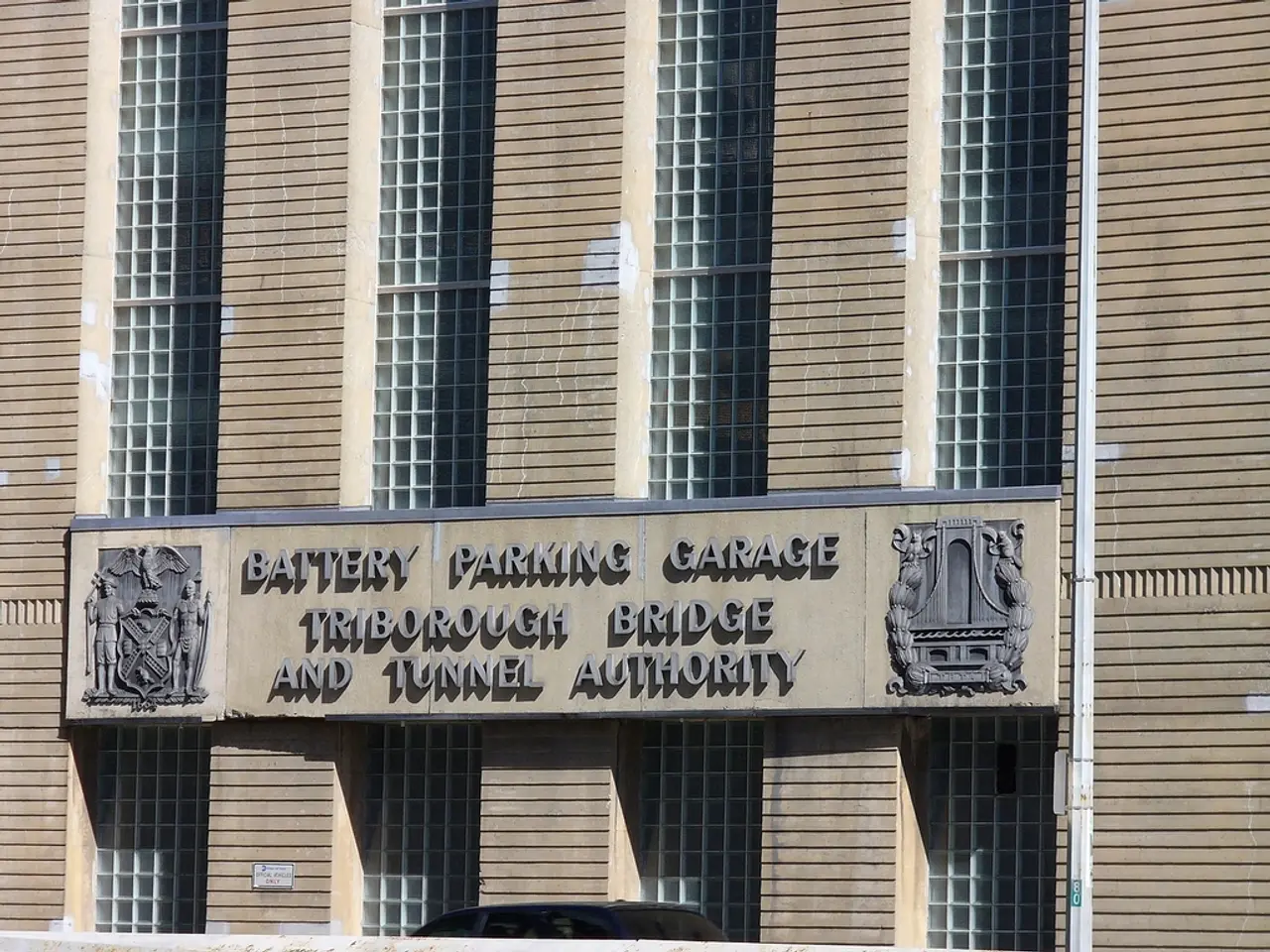Initiating Financial Meltdown's Origins Explored
If you're old enough to remember back to September 15, 2008, chances are you recall where you were when Lehman Brothers (a 158-year-old investment bank) collapsed. This event kicked off a series of financial calamities across big economies, plunging them into deep recessions reminiscent of the Great Depression. Devastated Lehman employees, carrying cardboard boxes filled with their belongings, became symbolic of the millions who lost their jobs, homes, and savings in the disaster that obliterated trillions of dollars of wealth.
The culprits behind this upheaval weren't hard to spot, but, much like in past financial debacles, the housing market played a significant role. In 2006, the bubble in the US housing market burst, thanks to supposedly safe mortgage-backed securities that had been marketed worldwide. These investments included high-risk subprime home loans with a high probability of default. As the number of mortgage defaults and foreclosures soared, the value of these securities plummeted, resulting in immense losses for investors and prompting panic in the financial markets.
After the crisis struck, governments began to implement bailouts and reforms to resuscitate the battered financial system. Over time, big banks became better-capitalized, markets were more regulated, and investors received greater protection. However, each passing month seems to bring fresh warnings echoing the strife of 2008, with fears growing that property markets may be destabilized again, not by risky lending practices but by the mounting pressure of climate-related disasters on insurers and other critical financial institutions.
In December, a report from the then-Democrat-chaired US Senate Budget Committee, titled "Next to Fall: Climate Change and the Insurance Industry," warned that property values will ultimately decline—much like in 2008—sending household wealth spiraling. The report suggested that the US could be facing a systemic crisis similar to (or even greater than) the financial catastrophe of 2008.
In January, the Financial Stability Board—created to monitor the global financial system after the 2008 crisis—stated that insurance was becoming more expensive and scarce in disaster-prone areas, and climate shocks could set off wider market turmoil. Fed chair Jay Powell added his concerns, expressing that banks and insurers were already leaving risky areas, potentially leading to a situation where obtaining a mortgage in certain regions would be impossible within the next 10-15 years.
Not long after, Warren Buffett, the legendary investor behind the Berkshire Hathaway conglomerate, which includes insurance companies, announced that property coverage prices had increased significantly due to a surge in violent storm damage. He also cautioned that a truly massive insurance loss was on the horizon. Günther Thallinger, a board member at Germany's insurance giant Allianz, used a LinkedIn post to warn that global temperatures were rapidly approaching levels that insurers would no longer be able to operate, creating systemic risks that threatened the very foundation of the financial sector.
While experts haven't agreed on a single scenario, there's one potential path to climate-fueled financial upheaval that's been discussed this year with various investors, financial analysts, regulatory experts, insurance executives, scientists, and researchers. This scenario begins with increasing numbers of insurers withdrawing from US states as wildfires, storms, and hurricanes ravage the country—not just in disaster-prone states, such as California, but across the nation.
State governments may struggle to fill the gaps left by insurers with more last-resort insurance schemes. However, these plans tend to cost more and provide less coverage, leading to a grim reality for thousands of homeowners. As property insurance coverage wanes, the presence of banks will also fade across the nation, making it impossible to find branches in many areas and forcing some lenders to abandon the mortgage business entirely.
It's worth noting that views on the possibility of a climate-induced financial disaster are not universally shared. Some experts remain sceptical, arguing that declines in property values haven't posed a threat to financial stability in cities like Detroit and that declines in coastal cities affected by rising sea levels wouldn't be any different.
While some landing spots on this trajectory may be disputed, there's widespread agreement on one daunting point: climate-driven financial havoc, if it happens, could be more menacing than past financial crises. That's because it's driven by global carbon emissions, which the world has fought to cut for more than 30 years, rather than traditional financial failures that typically lead to recovery.
"This type of climate risk is not cyclical. It's heading in one direction," explains economist Ben Keys, a professor of real estate and finance at the University of Pennsylvania's Wharton School. "So you don't necessarily need as big a shock, if it's a permanent shock, to have a serious, long-term effect on house prices and other asset values."
For many years, financial analysts have believed there are two main ways that global warming could impact financial stability: the physical risks of extreme weather, and the so-called "transition risks" from government policies or technologies that disrupt fossil fuel-based investments by hastening the move to greener economies. The two threats are linked: if physical risks intensify, they could in theory spur tougher climate policies that deepen transition risks.
However, physical dangers initially seemed more remote when the idea of climate-driven financial problems first arose. Mark Campanale, an early thinker on climate chaos, was a 40-something sustainable investment analyst in London in 2007 when he began warning about the threat of "unburnable carbon,"— fossil fuels that could not be used if global temperatures were kept at safe levels. He argued that a carbon bubble could form as governments launched policies that made it impossible to burn these fuels without massive financial losses.
Fast forward to today, and the picture is changing as the reality of climate-related disasters becomes ever more tangible. The latest example: wildfires are ravaging the LA area, razing homes, even those of Hollywood celebrities.
In a disturbing echo of past financial turmoil, mortgage defaults are beginning to rise again, along with foreclosures and credit card delinquencies. But this time, it's different. The underlying cause of this crisis isn't financial—it's physical, and it's unclear how it will ever end.
As Europe experiences its hottest March on record, Günther Thallinger, a board member at Germany's insurance giant Allianz, warned that global temperatures are nearing levels that could force insurers out of business, creating a systemic risk that threatens the very foundation of the financial sector.
- The 2008 financial crisis, triggered by Lehman Brothers' collapse, was a harsh reminder of the potential destructive power of markets, especially those related to real estate and finance.
- Central banks and governments worldwide have been trying to prevent a repeat of the 2008 crisis, but fears are growing that the mounting pressure of climate-related disasters on insurers and other critical financial institutions may destabilize property markets again.
- Experts suggest that increasing numbers of insurers withdrawing from disaster-prone areas could lead to a decline in property values, much like in 2008, sending household wealth spiraling and potentially causing a systemic crisis.
- Financial analysts have identified two main ways that global warming could impact financial stability: the physical risks of extreme weather and the transition risks from government policies or technologies that disrupt fossil fuel-based investments.
- Mark Campanale, an early thinker on climate chaos, argued that a carbon bubble could form as governments launched policies that made it impossible to burn unburnable carbon without massive financial losses.
- Today, the reality of climate-related disasters is becoming ever more tangible, and the latest example is the ongoing wildfires in California, which have the potential to trigger mortgages defaults, foreclosures, and credit card delinquencies.
- Climate-driven financial havoc, if it happens, could be more menacing than past financial crises because it's driven by global carbon emissions, which the world has fought to cut for more than 30 years, rather than traditional financial failures that typically lead to recovery.
- In order to mitigate the risks of climate-induced financial crises, it is crucial for environmental scientists, financial analysts, and policymakers to collaborate closely to develop and implement resilient financial systems that can withstand the physical risks of extreme weather and the transition risks from the move toward greener economies.







